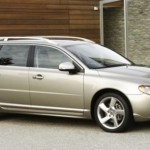All-wheel drive - How does it work?
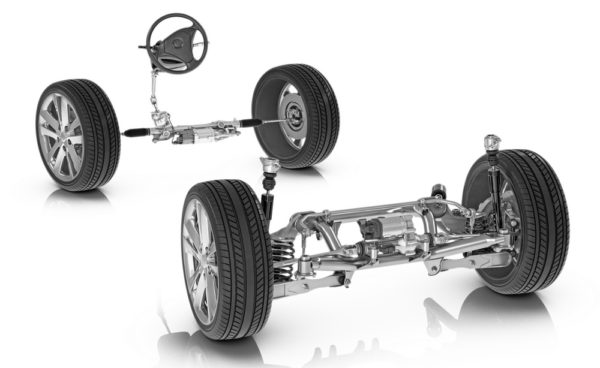
All-wheel steering
The front wheels turn and steer the car. The latter are "fixed", which limits the ability to maneuver in a small space. Therefore, if we also give them the ability to turn in the opposite direction from the front, the car will have a smaller turning circle, which means that it will be easier to get in and out of parking places, to overcome sharp curves and the like. However, there is also better behavior at high speeds in the direction. How?
All Wheel Management GENERAL has two modes of operation
- At low speeds - the rear wheels turn in the opposite direction to the front wheels, which increases the car's ability to maneuver in a small space. With a "more professional" vocabulary, the circle of turning is reduced - that is. the diameter of the circle it makes when driving in a circle with the steering wheel fully rolled.
The smaller the turning circle of a car, the easier it can be to park or park, to overcome a sharp curve, to make a semi-circular turn and the like. How much easier it can do depends on the maximum angle of rotation of both the front and rear wheels. Of course, you cannot expect a miracle, e.g. to rotate like some loader with a hinge in the middle.
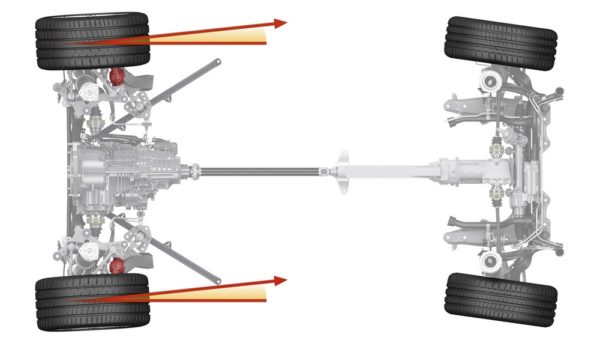
All-wheel steering
- At high speeds - the rear wheels turn in the same direction in relation to the front ones, which gives a calmer and more stable transition to the adjacent lane, e.g. on the highway or when overtaking.
Someone may think of this as facilitating parallel parking - you stand behind the parking lot, roll the steering wheel, all the wheels turn in the same direction and the car diagonally "slides" into the parking space. Such concepts do exist, but not with serial passenger vehicles.
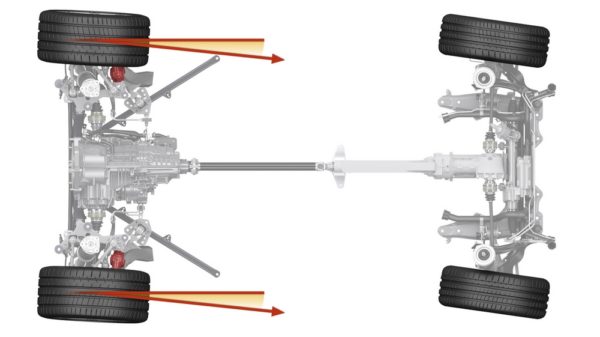
All-wheel steering
However, it's not all that simple. There are slight and "fast" curves, sharp and "slow", so in one rear wheels they can follow the front and in the other they can rotate opposite to them, with modern cars deciding everything in a split second, based on various parameters and depending on what the constructors of the particular model wanted to achieve.
Let's not forget the sharp maneuvers at higher speeds, when the driver avoids a sudden obstacle. Manufacturers say both ESP (Electronic Stability Control) and other safety systems are specifically tuned to all-wheel-drive models to first allow all the benefits of swiveling the rear wheels to retain control of the vehicle, and only then to intervene. .
In some models, the computer can recognize the sporting driving, ie. sharp left-to-right steering, as well as strong acceleration and braking, and adjusts the system accordingly.
How far does the rear wheel rotate?
Regardless of the speed and driving conditions, the rear wheels rotate only a few degrees, depending on the driving conditions. When the car is parked, they rotate at maximum, for example up to 3,5 °. Let's take one specific example - the Renault Talisman. As we can see in the picture below, when the front wheels are turned 15 ° at low speeds, the rear wheels only turn 1 ° in the opposite direction to the front ones.
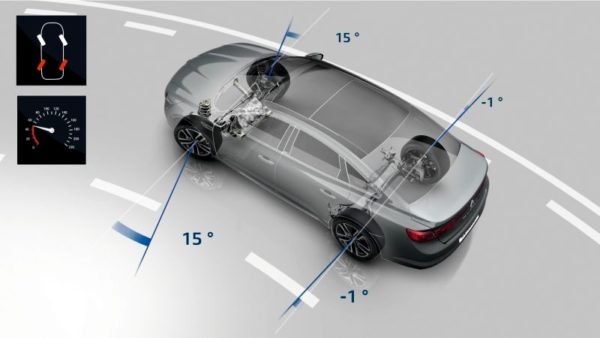
For example, Renault The Laguna GT has a 10% smaller turning circle thanks to the rear wheels turning (10,8 m instead of 12,05 m).
When it comes to Porsche, at speeds below 50 km / h, the rear wheels swivel up to 2.8 ° opposite to the front wheels. At speeds in excess of 80 km / h, the rear wheels rotate to 1.5 ° in the same direction as the front wheels. It is similar to BMW, except that under 60 km / h the rear goes opposite the front, and over 80 km / h the rear also follows the front.
All-wheel drive - What does it look like in practice?
Check out these videos, for example Porsche and Lexus vehicles.
Camera snapshot of rear bumper mounted:
Lexus also demonstrates our highway behavior:
How do the rear wheels rotate?
In short, electric motors change the position of the rear wheels, and the computer "orders" them at what angle and at what speed they operate. In doing so, the computer also takes into account the capabilities and operation of all other active safety systems, which are generally themselves more or less integrated.
Let's look behind the wheel of an athlete like Porsche to see what moves the wheels:
The rotation can be done on both mechanical and hydraulic systems, which was used with older vehicles.
A bit of history - All-wheel drive
The use of rear wheels when turning is an old idea and has been used by many manufacturers, especially the Japanese, in various ways, but mostly in sports 'top' models. For example, Nissan In the late 0.5s he had a model whose rear wheels were rotated (up to XNUMX °) by a computer controlled hydraulic system.
In 1987, Honda offered the Prelude with a fully mechanical system, which was able to rotate the rear wheels up to 5.3 ° opposite to the front ones. Mazda, Mitsubishi, Toyota i Honda they also did a lot in this field in the late XNUMXs and early XNUMXs.
Which cars have this system?
Mostly they are quite expensive. Some have it as standard, others can pay extra, and others only get it with the most powerful versions. It is used by more and more manufacturers, Nissan, Renault, BMW, Acura, Porsche, Audi.
Dragan Romcevic
Retrieved from: www.polovniautomobili.com
Recommendation of similar texts:

Hi there, I am Mladen and I am an auto enthusiast. I started this blog years ago to help like minded people share information about latest cars, car servicing ideas, used car info, exotic cars, and auto technology. You will find helpful articles and videos on a wide variety of cars - Audi, Mercedes, Toyota, Porsche, Volvo, BMW and much more. Ping us if you have anything cool to share on latest cars or on how to make older cars more efficient, or just want to say hi!

